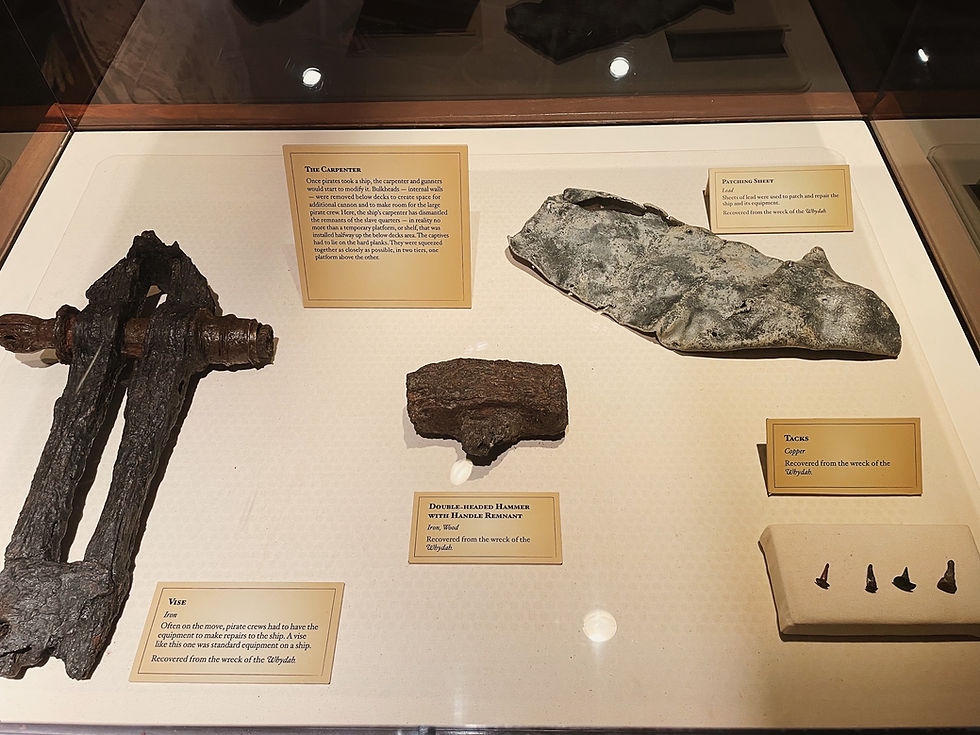Nomenclature and Variations of Parts of the Spiral Auger Bit
- marcsitkin
- Aug 5, 2021
- 3 min read
Excerpted from The Chronicle, Vol. XXI no. 2, June 1968
by Robert H. Carlson
The purpose of this article is to identify and describe the different types of Spiral Augers and their components. In effect, it sets up the "ground rules" for a future article on the development of the spiral auger, so that when the spur, the lip, the tang, etc., are mentioned, everyone will be talking about the same thing. We have used as primary sources for the nomenclature, patent specifications, catalogs, trade publications, and workman's guides, believing that the men who invented, improved, made, sold, and used the tool are best qualified to name its parts.
The drawing is mostly self-explanatory. The parts are somewhat exaggerated for clarity and, of course, few, if any, augers had such combinations of spurs as shown.
There are two basic types of Spiral Augers and Bits: single-twist and double-twist. A single-twist has one channel up which the chips travel, and is formed from stock basically hemisphereical or triangular in cross-section, Figure J, a. A double-twist has two channels for chip removal, and is formed from stock basically rectangular in cross-section, Figure I, b. The channel is called a pod by most patentees; a legacy from the early cylindrical pod augers. A single-twist almost invariably has a single thread lead screw, Figure 1, d; whereas a double-twist almost always has a double thread lead screw, Figure I, c. When a double-twist bit has a single thread lead screw, it is for the purpose of quick boring and use in end-grain, hard, green, or pitchy wood where the double thread would clog and thus not draw the bit into the work. A single-twist is stronger and stiffer, although some dispute this - usually manufacturers of double-twist augers. It is used for rapid boring, and in hard, wet, knotty, strong-grained woods, and, end-grain; but it does not make as clean a hole as a double-twist. The chips have least tendency to clog since they are forced to the center of the hole. These qualities made it popular with builders of ships, bridges, trestles, freight cars, etc., where deep and straight holes are required. One special kind of single-twist did not have either lead screw or spur. Called bare-foot, or bare-faced, it has less tendency to follow the grain and wander off line. A double-twist crowds the chips to the circumference of the hole, where they tend to jam between the wall and the bit, again some people, previously mentioned, dispute this. However, it produces a clean and smooth hole of very accurate diameter, and thus is popular with cabinet workers and furniture makers.
There is one important style of auger-bit which at first glance appears to be a third type, but actually is a variation of the single-twist. This is the solid-center or straight-core bit, usually known today as the Irwin Pattern, Figure I, e, where the spiral web climbs a central shaft. This is the only type of single-twist bit that can have either a double or a single cutter (Double Cutter illustrated).
The basic difference between a gimlet and an auger is size. A gimlet runs from 1/16 to 1/4 inch. An auger gimlet runs from 1/4 to 2 inch. An auger runs from 1/2 to 4 inch. When an auger is made with a tang for use in a brace, it is called a bit or auger-bit. Naturally some overlapping occurs – brace-bits run as small as 1/4 inch and as large as 1-1/2 inch.




Comments